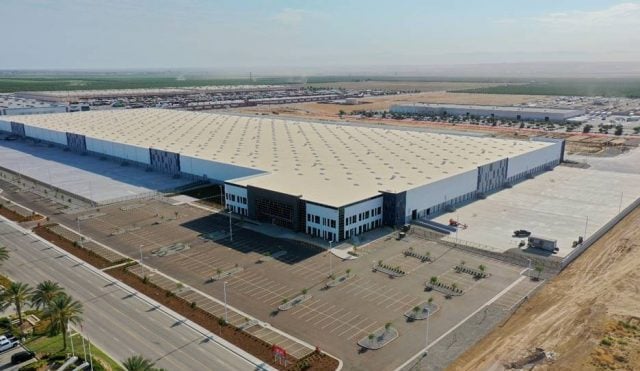ONTARIO, CA—Vacancies are dropping and new construction soaring as logistics companies grow and e-retailers increase their appetites for large distribution and warehousing centers in the Inland Empire, Colliers International tells GlobeSt.com exclusively. Demand for industrial space during the third quarter rose, with leasing activity remaining strong, the firm reports.
During the quarter, industrial sales and leasing activity in the Inland Empire totaled 7.6 million square feet spread among 80 leases, breaking down to 6.6 million square feet leased and 23 sales across 908,100 square feet, according to the firm. Year-to-date sales and leasing activity was 25.2 million square feet, which mirrors the activity seen a year ago during the first three quarters of 2013.
According to John Hollingsworth, executive managing director of Colliers International, “What this demonstrates is that there is continuing demand for the newer, more efficient buildings. But the market fundamentals continue to be sound.”
Overall vacancy rates during the third quarter declined to 4.9% from the 5.1% recorded during the third quarter of 2013, pushed downward by the region's soaring demand for large warehouse and distribution buildings. “This is the last submarket within the Greater Los Angeles region that still has raw land available for development of large industrial buildings,” says Hollingsworth. “The rest of the L.A. basin industrial base is, or soon will be, built out, and developers are finding land extremely scarce in the more-urbanized areas of the basin. Despite this, there is still strong demand for urban infill properties due to their proximity to the ports of Los Angeles and Long Beach. Clients will continue to pay a premium for space near the ports—if they can find any.”
Construction for large industrial buildings has also been strong in the region, according to the report. In the third quarter, there were 11 buildings greater than 500,000 square feet under construction or completed, with 60% pre-leased based on square footage.
“There has been a long pent-up demand for the larger, newer and more-efficient buildings in the 500,000-square-foot-and-above range,” says Hollingsworth. “As the economy has strengthened, developers who sat out the recession and who are capable of building these larger, more-efficient structures have begun to do so in earnest this year.”
Despite all of this new construction, Hollingsworth says he expects demand to absorb most of that space quickly, “creating a challenging, competitive market for tenants seeking new space. We anticipate that the year-end absorption will be strong, with another five to six transactions completed in buildings over 500,000 square feet and that there will be continuing strong demand for developable land across the Los Angeles/San Bernardino basin.”
Hollingsworth notes that 10 new projects finished completion during the third quarter, totaling 4.3 million square feet, with 1.3 million square feet of that amount leased prior to completion. Overall, there remain 11.9 million square feet of industrial space under construction, of which 3.6 million square feet is already leased.
“This is a positive sign for this market in particular and for the region overall,” says Hollingsworth. “It shows developers are gaining a level of confidence in the market not seen since the recession, which will help others come into the market on both the tenant and development side.”
Vacancy remains fairly tight for buildings over 500,000 square feet, with a current rate of just 5.3%. While this size segment comprises less than one-third of the base for the Inland Empire, it accounted for some 90% of the net absorption recorded in the third quarter, Colliers reports. “It is the size segment that is most sought-after by large, multinational tenants with logistics, warehousing and, in some cases, manufacturing needs,” says Hollingsworth. “Builders, who at first balked at building such large facilities without a tenant in hand, are now more willing to build first because they know the demand is there for the taking.”
Stay tuned for an update on this story in which Colliers reveals information about the demand of smaller industrial space in the Inland Empire.
© 2025 ALM Global, LLC, All Rights Reserved. Request academic re-use from www.copyright.com. All other uses, submit a request to [email protected]. For more information visit Asset & Logo Licensing.







